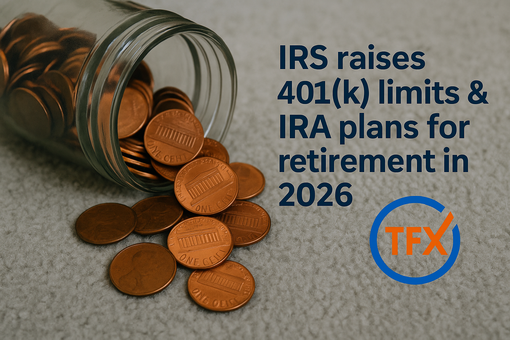Form 8880: Credit for Qualified Retirement Savings Contribution
Planning for retirement is a crucial aspect of financial management, yet it often remains overlooked by many, particularly those with low to moderate income.
The US government, recognizing this gap, has introduced a tax incentive to encourage retirement savings among this demographic.
Enter Form 8880, the IRS form used to claim the Credit for Qualified Retirement Savings Contributions, more commonly known as the Saver's Credit.
"The Saver's Credit is an excellent incentive for low to moderate-income earners to save for their retirement. Not only does it help in reducing the current year's tax liability, but it also encourages a habit of saving, which is crucial for securing one's financial future," - tax expert
What is Form 8880?
Form 8880 is a tax form used by eligible taxpayers to claim the Saver's Credit, a non-refundable tax credit designed to incentivize low and moderate-income individuals to contribute to their retirement savings accounts such as IRAs, 401(k)s, or other similar employer-sponsored retirement plans.
Eligibility criteria
So, how do you qualify for the saver's tax credit?
To claim the Saver's Credit using Form 8880, taxpayers must meet the following criteria:
- Age: Must be at least 18 years old.
- Student Status: Cannot be a full-time student.
- Dependency: Cannot be claimed as a dependent on someone else's tax return.
Additionally, your adjusted gross income (AGI) must fall below certain thresholds, which vary based on your tax filing status.
The IRS updates these thresholds annually, so it is advisable to check the IRS website or consult a tax pro for the most current figures.
How to claim the credit
- Determine your eligibility: Ensure you meet all the eligibility criteria mentioned above.
-
Calculate your contributions: Sum up all the eligible contributions made to your retirement savings accounts during the tax year.
NB! Remember, the maximum amount of contributions eligible for the credit is $2,000 ($4,000 if married filing jointly). - Fill out Form 8880: Complete Form 8880, providing information on your filing status, AGI, and the amounts contributed to eligible retirement savings accounts. Calculate the credit based on the appropriate credit rate from the form's table.
- Attach to your tax return: Attach the completed Form 8880 to your federal income tax return (Form 1040, 1040-SR, or 1040-NR).
Form 8880 preview
Saver's Credit amounts (years 2023 & 2024)
The Saver's Credit is calculated based on a percentage of your eligible retirement savings contributions.
The percentage ranges from 10% to 50% of your contributions, up to a maximum of $2,000 ($4,000 if married filing jointly), and it varies based on your adjusted gross income (AGI) and tax filing status.
Below are the tables for the Saver's Credit amounts for the tax years 2023 and 2024:
2023 Saver's Credit amounts
| Credit Rate | Married Filing Jointly | Head of Household | All Other Filers |
|---|---|---|---|
| 50% | AGI of up to $43,500 | AGI of up to $32,625 | AGI of up to $21,750 |
| 20% | $43,501 - $47,500 | $32,626 - $35,625 | $21,751 - $23,750 |
| 10% | $47,501 - $73,000 | $35,626 - $54,750 | $23,751 - $35,500 |
| 0% | Over $73,00 | Over $54,750 | Over $36,500 |
2024 Saver's Credit amounts
| Credit Rate | Married Filing Jointly | Head of Household | All Other Filers |
|---|---|---|---|
| 50% | AGI of up to $46,000 | AGI of up to $34,500 | AGI of up to $23,000 |
| 20% | $46,001 - $50,000 | $34,501 - $37,500 | $23,001 - $25,000 |
| 10% | $50,001 - $76,500 | $37,501 - $57,375 | $25,001 - $38,250 |
| 0% | Over $66,000 | Over $49,500 | Over $33,000 |
NB! These are the income ranges for the tax years 2023 and 2024 only. The IRS adjusts the income ranges for inflation each year.
Additionally, these tables apply to contributions made to traditional IRAs, Roth IRAs, 401(k)s, 403(b)s, governmental 457(b)s, SIMPLE IRAs, and SARSEPs.
Key points to remember
- Non-Refundable Credit: The Saver's Credit is a non-refundable tax credit, meaning it can reduce your tax liability to zero, but will not result in a refund if the credit amount exceeds your tax liability.
- Contributions and distributions: Only contributions made to your retirement accounts during the tax year can be counted towards the credit. Additionally, any distributions received from your retirement accounts during the tax year, and the two preceding tax years, may reduce the amount of contributions eligible for the credit.
- Multiple accounts: If you have contributed to multiple retirement accounts, you can include all those contributions when calculating the credit, up to the maximum allowed contribution limit.
Bottom line
Form 8880 provides a valuable opportunity for low and moderate-income individuals to reduce their tax liability while simultaneously saving for retirement.
While the process to claim the Saver's Credit may seem straightforward, it is always advisable to consult a tax professional to ensure you fully understand the requirements and accurately claim the credit.
Free call with our team
Join 50,000+ happy taxpayers
Remember, every dollar saved today is a step towards a more secure financial future.
Start saving for your retirement now and take advantage of the tax benefits offered by the IRS. Your future self will thank you.
FAQ
Yes, if you have made eligible contributions to your retirement savings account and you meet the income and other eligibility criteria, you should file Form 8880 to claim the Saver's Credit. Filing this form can help reduce your tax liability for the year.
Claiming the retirement savings contribution credit, or Saver's Credit, is not mandatory. However, if you are eligible, it is highly recommended that you claim the credit as it can significantly reduce your tax bill. You will need to file Form 8880 to claim this credit.
The income limit for the savers tax credit varies based on your tax filing status. For the tax year 2023, the income limits are as follows:
- Married Filing Jointly: $67,500 or less
- Head of Household: $50,625 or less
- All Other Filers: $33,750 or less
These limits are adjusted annually for inflation, so it is advisable to check the IRS website or consult a tax professional for the most current figures.
You cannot claim the Saver's Credit if you:
- Are under 18 years old.
- Are a full-time student.
- Are claimed as a dependent on someone else's tax return.
- Have an adjusted gross income (AGI) above the income limits specified for your filing status.


